Vises are devices typically containing two jaws that may be brought together or separated via screw, lever, etc; used to secure an object while it is worked on.
Types of Vises
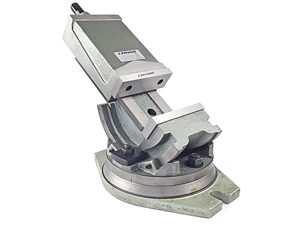
Angle: contains marked adjustments which allows for clamping at different angles.
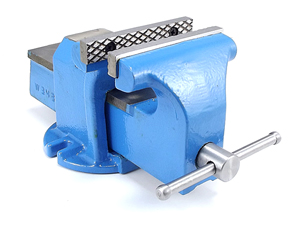
Bench: mounted on a table or workbench to secure work between two flat jaws; most often used in light-duty applications.
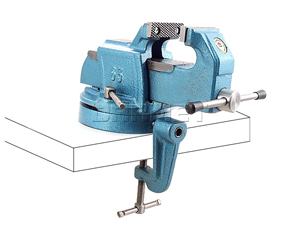
Clamp-on: vises are basically very light-duty bench vises. They usually have smooth jaws for wood, plastic and light metalworking, but some have serrated jaws for getting a better grip on metal. Some unique vises combine these features in a rotating design. They also help to secure an object while working on the object.
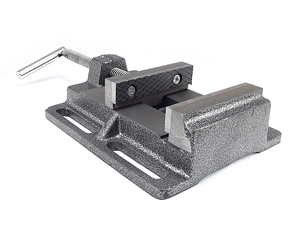
Drill Press: holds work while you are drilling, reaming or tapping on a drill press.
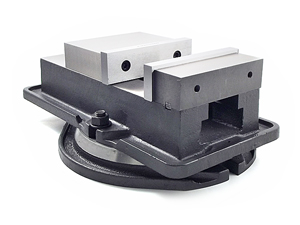
Machine: also known as Milling Machine vise-secures a work piece between a movable jaw and a stationary jaw; used in conventional machine tool applications such as milling, jig boring, grinding and shaping.
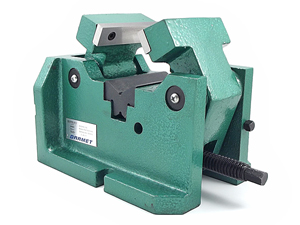
Pipe: made of iron yoke and base with hardened steel jaws; used to hold pipe to perform pipe fabrication operation.
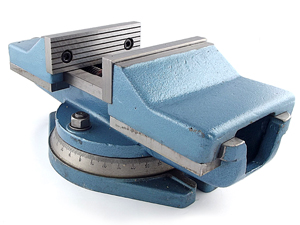
Self-centering: facilitates accurate, automatic job centering. It is most handy when applied to work pieces of varying sizes for which the same operation will be performed, as it requires just one machine setting.
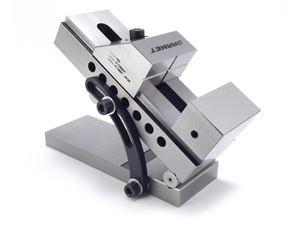
Sine: uses solving triangles and gage blocks to set up high accuracy clamping at desired angles.
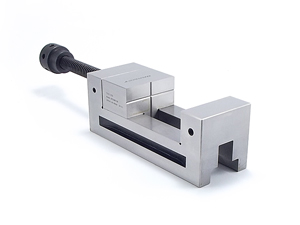
Toolmaker: useful in tool manufacturing, grinding, milling, engraving and jig boring machines for measurement and inspection, and in manufacturing processes that requires accurate clamping. They are available in screw and screwless models.
Types of Vise Jaws
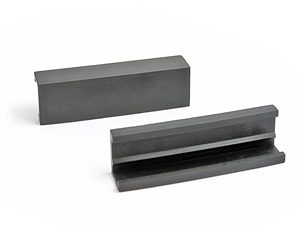
Soft Jaws: plastic, aluminum, leather or lead jaw covers on jaws of a vise or pliers that prevent marking and damage to work.
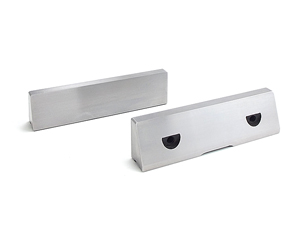
Smooth Jaws: able to hold material of different shapes and prevent indentation in soft metals; versatile.
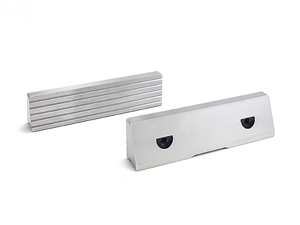
Grooved Jaws: vertical/horizontal grooves effectively hold cylindrical pieces parallel or perpendicular to vise.
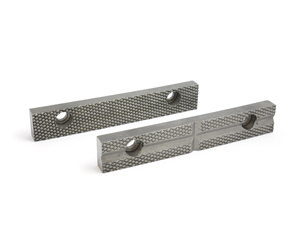
Serrated Jaws: cross-hatch pattern permits firm gripping of piece in any position.
Safety Tips
Do's
- Wear safety glasses or a face shield when using striking or power tools on a work piece held by a vise
- Always attach the vise securely. Place bolts in all holes in the base of the vise. Use lock washer under the nuts
- Mount a vise so that the stationary jaw projects slightly beyond the edge of the workbench, as this will allow long work to be clamped in the vise free of interference from the edge of the workbench
- Ensure workbench is firmly secured to its base
- Always check vises for cracks or other damage before clamping a work piece
- Use a vise large enough to hold work without strain
- Place work piece in vise so that full clamping surface of the jaw supports the work piece
- Keep work piece in vise as close as possible to jaws to avoid vibration while operating
- Support end of extra long work with an adjustable stand, saw horse or box to avoid extra strain on vise
- Keep all threaded and moving parts clean, oiled and free of chips and dirt
- Use vise jaw liners where work might be marked
- Replace bent handles and worn jaw inserts immediately
Don'ts
- Do not weld vise base to any metal
- Do not repair vise by welding or brazing
- Do not try to bend a heavy rod in a light vise
- Do not cut into the jaws
- Do not apply heavy pressure at vise jaw corners
- Do not use handle extension (i.e. pipe) for extra clamping pressure
- Do not hammer the handle to tighten beyond normal hand pressure
- Do not use vise jaws as an anvil
- Do not operate vise with even the slightest crack
- Do not unscrew or open vise jaws wider than they were designed for use
It is recommended that all users refer to manufacturer’s instructions for specific safety guidelines.
